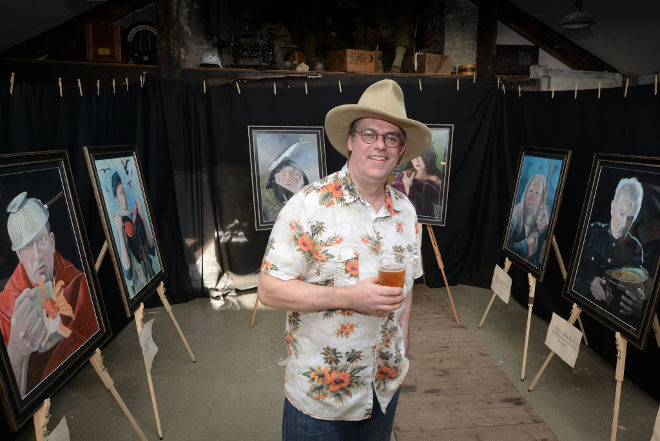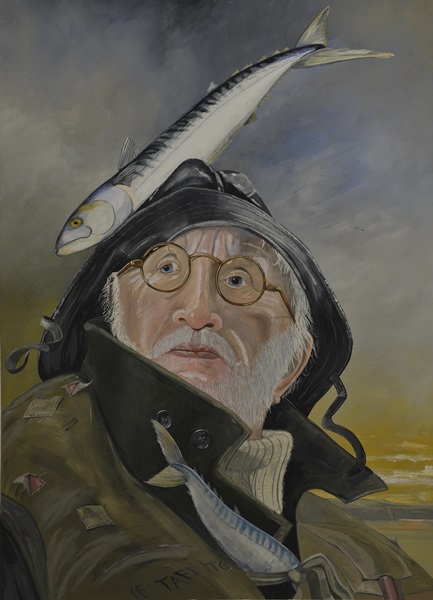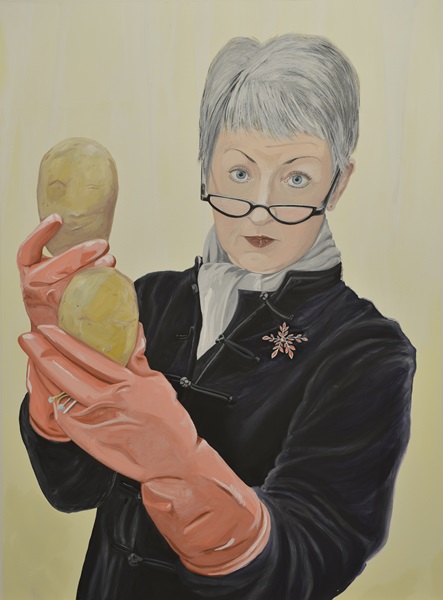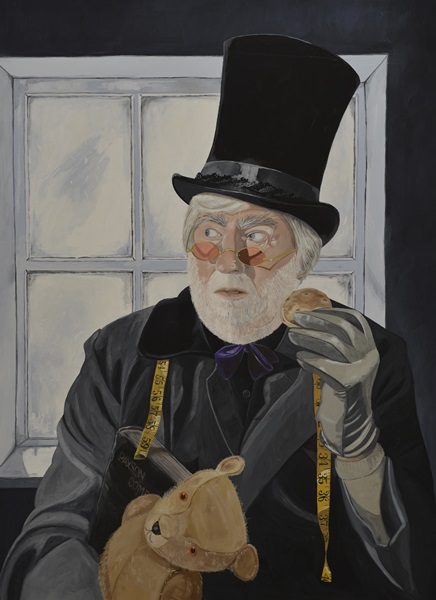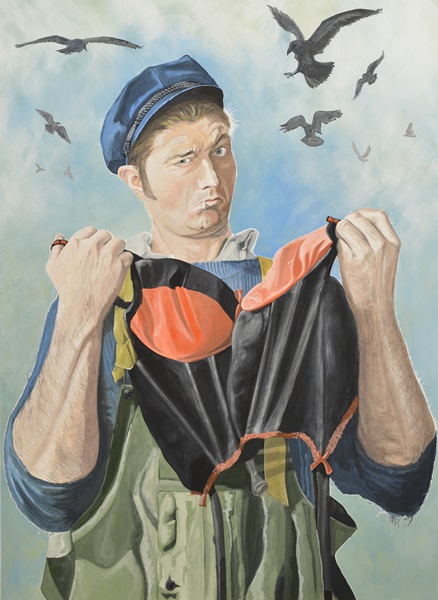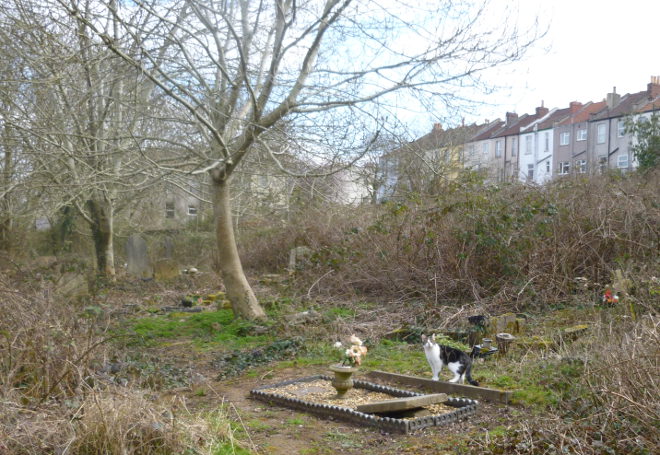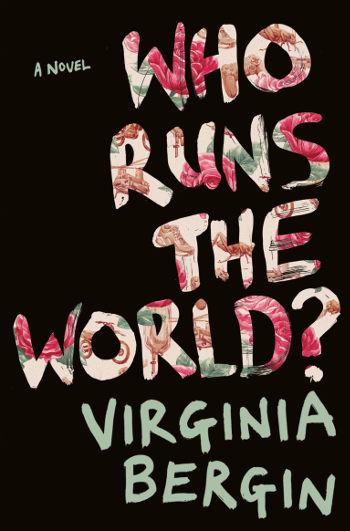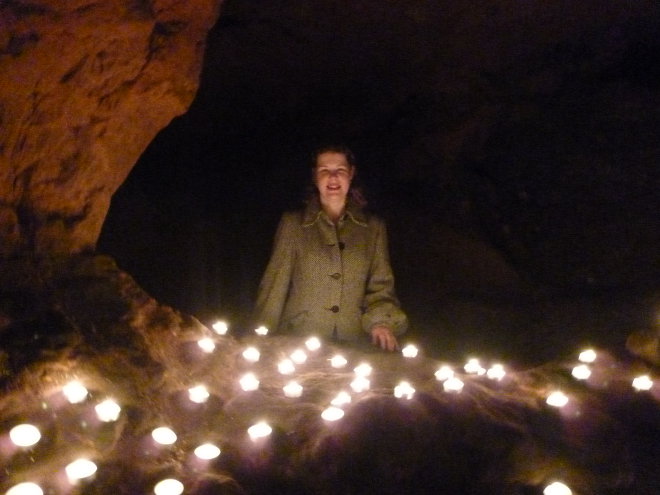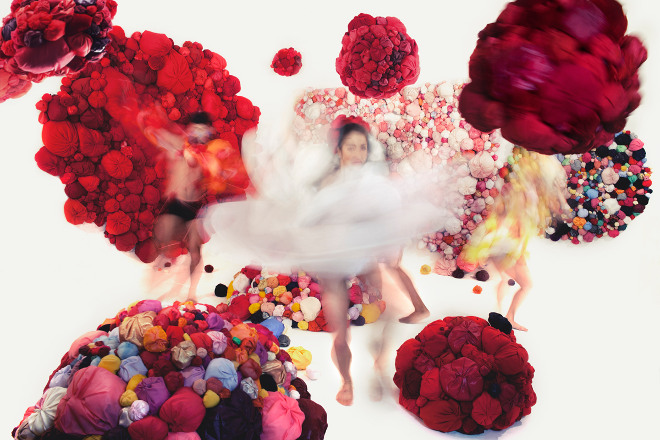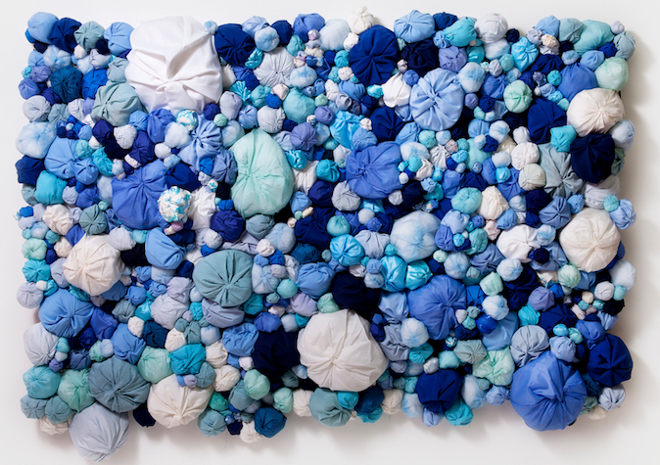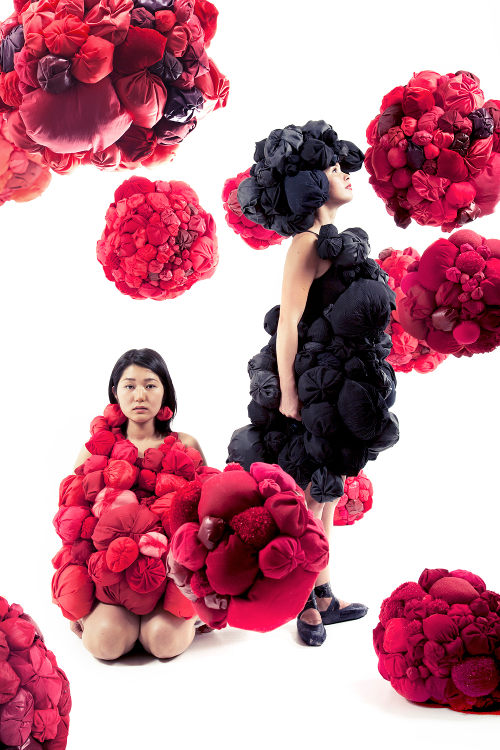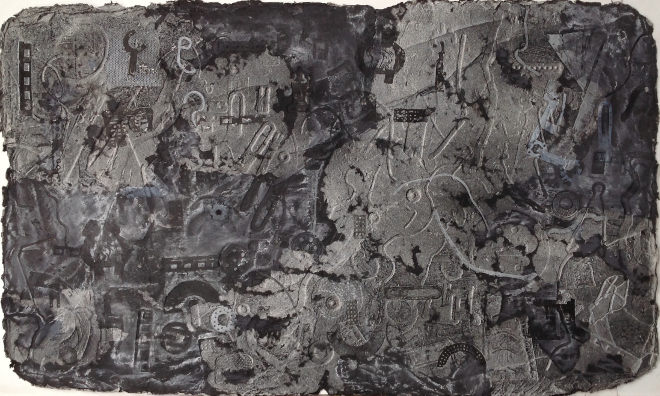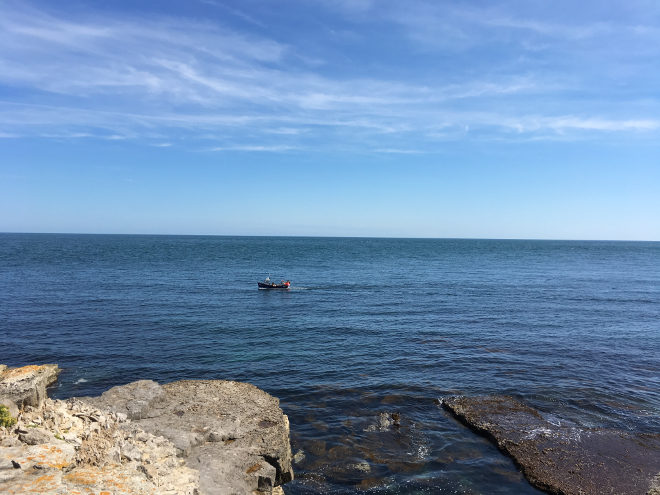Dylan Thomas was born on this day in 1914, making it entirely appropriate to celebrate with an artist I met in the town where he wrote much of his poetry, and the play Under Milk Wood.
I encounter Seimon Pugh-Jones in Laugharne while exploring the Tin Shed museum – a marvel of a place dedicated to wartime memorabilia. There’s even an Anderson shelter in the back garden, and countless ephemera such as old letters and guides for American GIs posted in Britain with glorious cultural titbits such as ‘Reserved, not unfriendly…”
Seimon is one of the museum’s founders, with a background in film photography. He’s currently absorbed in painting all the characters from Dylan Thomas ‘play for voices’, Under Milk Wood.
“I’d done stills photography for the History Channel. It was for a series called ‘Battle Stations’, which gave me a lot of experience in historical reconstruction pictures,” says Seimon. “That basically means, recreating images in the style of original WW2 pictures. Costume, props and vehicles had to be accurate to the period and then I would create a little story within the image to add some pseudo-reality, if that makes sense.”
Through “being at the right place at the right time”, Seimon was invited to work on Band of Brothers, supplying ‘newsreel’ style footage shot on a vintage camera. “I even got a bit part. That was an amazing experience,” he comments.
Seimon then became a stills photographer for an American history magazine called Armchair General. “I did ‘reconstruction style photography’ full time for four years, and loved it, but then my contract came to end and I was out of work,” he says. “Because I had a large collection of costume and props, I ended up opening the Tin Shed museum with a friend of mine, Andrew Isaacs, in Laugharne.”
After focusing on working on the museum for several years, Seimon was interviewed for a web-based photo-site. “One of the questions asked me was ‘What’s your next project?’ I’d committed myself to an exhibition of photography at a local gallery, and when I listened back to the interview, I realised I’d lost the enthusiasm for taking pictures.”
He adds: “I’m a bit old school, I love shooting on film and working in the dark room. There are some great photographers out there, but Photoshop and computer-manipulated images have taken the magic away from photography for me… But I’d made a promise to fill the gallery, so what could I do? I’d dabbled a bit with painting, nothing serious..so I though, Give it a go!”
He says producing portraits of Under Milk Wood’s characters was almost inevitable. “I live in Laugharne, virtually opposite to where Dylan Thomas is buried,” he says. “It’s a magical place and I quite understand how he got his inspiration for Under Milk Wood. This led me to take a photograph of a friend of mine, John Bradshaw, dressed as Captain Cat, with a fish on his head, (as you do) as a little photo project. It worked well as a picture, so I thought I’d paint him. It turned out ok. And as Captain Cat needs a Rosie Probert, she was next.”
Using the people of Laugharne as models for this was equally inevitable.
“Rosie Probert was another friend of mine, Lorrain King, who sings in the band I play for, Trenchfoot. That’s another story. As the paintings progressed, I realised I needed models…then I realised it would be so much fun getting my friends involved. So it went on from there.”
All kinds of details are to hand to bring the caricatures to life.
“Dylan Thomas has given the caricature such depth and richness, and a back story. I try and make the expressions realistic to those ‘moments’. I also try and incorporate subtle bits of humour.”
Running the Tin Shed museum offers endless opportunities for staging and painting the portraits. “I love vintage fashion, and having props and costume to hand makes it interesting too,” he comments. “The museum is not for profit, we can’t take a wage from it, so being able to paint around the museum, so to speak, is very handy.”
The lack of technology involved in his painting style is also appealing. “I suppose going back to ‘Old school’ works for me. I think art has replaced what I was missing in photography. It’s a new challenge.”
You can see more of Seimon’s paintings dotted around Laugharne, as well as encountering his models going about their everyday lives in a variety of settings around the village!
He admits that showing his models the finished works is always a tense moment.
“This is the nerve wrenching bit, because Under Milk wood is full of colourful caricatures. I have to make sure my models are comfortable with the casting. But so far, I’ve had a great response… Fingers crossed for the next series!”
Find Seimon at www.pughjones.co.uk.
Are you an artist or do you know an artist who would like to be showcased on SkyLightRain.com? Get in touch at judy(at)socketcreative.com.

